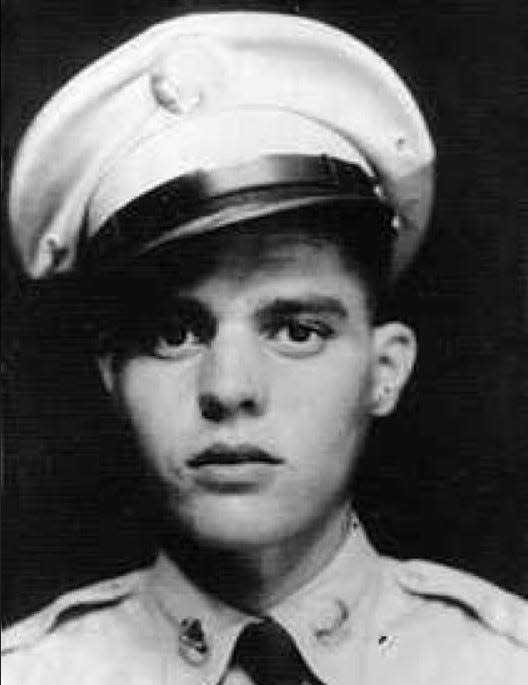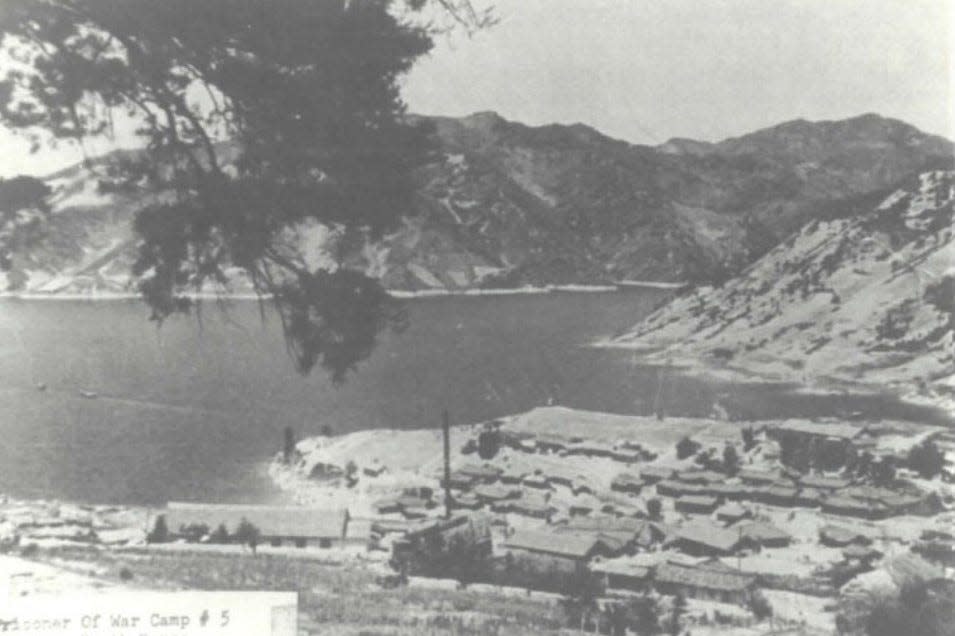RI soldier identified more than 70 years after he died in a North Korean POW camp

A 22-year-old soldier from Cumberland who died of starvation in a prisoner of war camp during the Korean War will be buried at Arlington National Cemetery.
U.S. Army Sgt. Lawrence J. Robidoux will be laid to rest in the nation's most famous cemetery nearly 70 years after U.S. authorities determined it would be impossible to recover his remains.
Robidoux's remains were, however, identified on Jan. 24, 2023, through dental, anthropological and mitochondrial DNA analysis, the Defense POW/MIA Accounting Agency (DPAA) announced Tuesday.
More:Frank Emond, who grew up in Pawtucket and survived Pearl Harbor, dies at 104
"I was sort of surprised," said Robidoux's nephew, Larry Couture of Arizona. "I think it was almost unlikely they would find him. It's what I had hoped for."
Robidoux's identification has brought some comfort to Larry Couture's mother, Lucille, who is Robidoux's sister. Lucille Couture is 97 and living in a North Smithfield nursing home, according to Larry Couture.
"They always talked about him," said Couture, who was named for his uncle. "He was quite the sketch artist. He did these beautiful sketches."
A ceremony will be held next month to present Lucille with her late brother's medals.
Robidoux has two other surviving sisters in Arizona, a brother in Nebraska and a brother in Ohio. A sister died recently at 90. Robidoux is also survived by Couture's siblings in Rhode Island, nephew Dennis Couture of Burrillville and Marlene Lamoureux of Cumberland.
Larry Couture, an Army veteran, spent a lot of time researching his uncle's fate, making inquiries starting in the 1990s to the office of U.S. Sen. John McCain of Arizona.
"Nobody really knew for sure what happened to him," Couture said.
Robidoux was reported missing in action on Nov. 27, 1950, after his unit’s withdrawal from Ipsok in North Korea, according to the DPAA. He was a member of B Company, 1st Battalion, 35th Infantry Regiment, 25th Infantry Division.
B Company was holding a "hastily erected defensive position" when Chinese Communist forces attacked from two sides, the DPAA stated in Robidoux's personnel profile. "After heavy fighting, the Chinese successfully infiltrated the American positions, forcing a withdrawal under heavy mortar and artillery fire. The U.S. troops pulled back to another position a mile farther south," the profile states.
After his capture, Robidoux was marched to POW Camp 5, on the Yalu River, where he died of starvation on May 31, 1951, the profile states. U.S officials learned of Robidoux's fate from several POWs returned during Operation Big Switch, a major prisoner exchange in 1953.

In the late summer and fall 1954, during Operation Glory, North Korea returned remains reportedly recovered from Pyoktong, also known as Prisoner of War Camp 5, to the United Nations Command, according to the DPAA, but the Central Identification Unit in Japan did not associate any of the remains with Robidoux.
In January 1956, the 22-year-old from Rhode Island was classified as non-recoverable, meaning the DPAA had determined Robidoux had died but did not believe his remains could be recovered.
Sixty-two years later, in July 2018, the DPAA proposed digging up the bodies of 652 unknown Korean War service members from the National Memorial Cemetery of the Pacific in Honolulu, Hawaii. A set of remains identified as "Unknown X-14646" was disinterred in December 2019 and sent to the DPAA laboratory at Joint Base Pearl Harbor-Hickam for analysis.According to the DPAA, their scientists used dental and anthropological analysis to identify Robidoux's remains, while scientists from the Armed Forces Medical Examiner System used mitochondrial DNA analysis.
Some 7,600 Americans are still unaccounted for from the Korean War, including hundreds believed to be in a “non-recoverable” category, according to the DPAA. "On rare occasions, new leads can bring a case back to active status," the DPAA states on its website.Since 1982, the remains of more than 450 Americans killed in the Korean War have been identified and returned to their families for burial with full military honors, according to the DPAA. That's in addition to the approximately 2,000 Americans whose remains were identified in the years after the war, when the North Korean government returned more than 3,000 sets of remains.
A sample of Couture's DNA was used to help identify his uncle, as was his mother's. Couture said he believes the future will hold more stories like that of his uncle as technological advances help identify the dead from distant wars.
"I think we're one of the few countries in the world that puts this much effort into retrieving and identifying our war dead," Couture said.
A date hasn't been set for Robidoux's burial but, Couture said, "there's quite a bit of buzz in the family knowing" he will be laid to rest in Arlington National Cemetery.
With reports from Journal veterans columnist Frank Lennon.
This article originally appeared on The Providence Journal: RI soldier will be buried in Arlington decades after Korean War death

